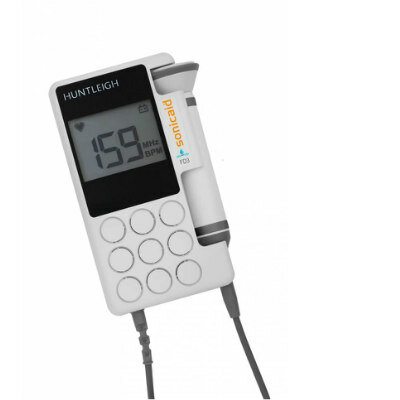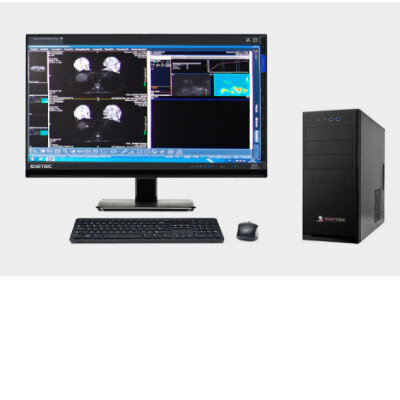Researchers Develop New AI Technology for Heart Attack Prediction
|
By MedImaging International staff writers Posted on 18 Sep 2019 |

Image: New AI technology could identify people who are at high risk for a fatal heart attack (Photo courtesy of Medscape).
Researchers from the University of Oxford (Oxford, England) have developed a technology using artificial intelligence (AI) that could identify people at high risk of a fatal heart attack at least five years before it strikes. Using machine learning, the researchers have developed a new biomarker, or 'fingerprint', called the fat radiomic profile (FRP), which detects biological red flags in the perivascular space lining blood vessels that supply blood to the heart. It identifies inflammation, scarring and changes to these blood vessels, which are all pointers to a future heart attack.
For their study, the researchers initially used fat biopsies from 167 people undergoing cardiac surgery. They analyzed the expression of genes associated with inflammation, scarring and new blood vessel formation, and matched these to the CCTA scan images to determine which features best indicate changes to the fat surrounding the heart vessels, called perivascular fat. The team then compared the CCTA scans of the 101 people, from a pool of 5,487 individuals, who went on to have a heart attack or cardiovascular death within five years of having a CCTA with matched controls who did not, to understand the changes in the perivascular space, which indicate that someone is at higher risk of a heart attack.
Using machine learning, they developed the FRP fingerprint that captures the level of risk. The more heart scans that are added, the more accurate the predictions will become, and the more information that will become 'core knowledge'. The researchers tested the performance of this perivascular fingerprint in 1,575 people in the SCOT-HEART trial, showing that the FRP had a striking value in predicting heart attacks, above what can be achieved with any of the tools currently used in clinical practice. The team hopes that the powerful technology will enable a greater number of people to avoid a heart attack, and plan to roll it out to health care professionals in the next year.
“By harnessing the power of AI, we've developed a fingerprint to find 'bad' characteristics around people's arteries,” said Professor Charalambos Antoniades, Professor of Cardiovascular Medicine and BHF Senior Clinical Fellow at the University of Oxford. “This has huge potential to detect the early signs of disease, and to be able to take all preventative steps before a heart attack strikes, ultimately saving lives. We genuinely believe this technology could be saving lives within the next year.”
“This research is a powerful example of how innovative use of machine learning technology has the potential to revolutionize how we identify people at risk of a heart attack and prevent them from happening,” said Professor Metin Avkiran, Associate Medical Director at the British Heart Foundation. “This is a significant advance. The new 'fingerprint' extracts additional information about underlying biology from scans used routinely to detect narrowed arteries. Such AI-based technology to predict an impending heart attack with greater precision could represent a big step forward in personalized care for people with suspected coronary artery disease.”
Related Links:
University of Oxford
For their study, the researchers initially used fat biopsies from 167 people undergoing cardiac surgery. They analyzed the expression of genes associated with inflammation, scarring and new blood vessel formation, and matched these to the CCTA scan images to determine which features best indicate changes to the fat surrounding the heart vessels, called perivascular fat. The team then compared the CCTA scans of the 101 people, from a pool of 5,487 individuals, who went on to have a heart attack or cardiovascular death within five years of having a CCTA with matched controls who did not, to understand the changes in the perivascular space, which indicate that someone is at higher risk of a heart attack.
Using machine learning, they developed the FRP fingerprint that captures the level of risk. The more heart scans that are added, the more accurate the predictions will become, and the more information that will become 'core knowledge'. The researchers tested the performance of this perivascular fingerprint in 1,575 people in the SCOT-HEART trial, showing that the FRP had a striking value in predicting heart attacks, above what can be achieved with any of the tools currently used in clinical practice. The team hopes that the powerful technology will enable a greater number of people to avoid a heart attack, and plan to roll it out to health care professionals in the next year.
“By harnessing the power of AI, we've developed a fingerprint to find 'bad' characteristics around people's arteries,” said Professor Charalambos Antoniades, Professor of Cardiovascular Medicine and BHF Senior Clinical Fellow at the University of Oxford. “This has huge potential to detect the early signs of disease, and to be able to take all preventative steps before a heart attack strikes, ultimately saving lives. We genuinely believe this technology could be saving lives within the next year.”
“This research is a powerful example of how innovative use of machine learning technology has the potential to revolutionize how we identify people at risk of a heart attack and prevent them from happening,” said Professor Metin Avkiran, Associate Medical Director at the British Heart Foundation. “This is a significant advance. The new 'fingerprint' extracts additional information about underlying biology from scans used routinely to detect narrowed arteries. Such AI-based technology to predict an impending heart attack with greater precision could represent a big step forward in personalized care for people with suspected coronary artery disease.”
Related Links:
University of Oxford
Latest Industry News News
- Bayer and Google Partner on New AI Product for Radiologists
- Samsung and Bracco Enter Into New Diagnostic Ultrasound Technology Agreement
- IBA Acquires Radcal to Expand Medical Imaging Quality Assurance Offering
- International Societies Suggest Key Considerations for AI Radiology Tools
- Samsung's X-Ray Devices to Be Powered by Lunit AI Solutions for Advanced Chest Screening
- Canon Medical and Olympus Collaborate on Endoscopic Ultrasound Systems
- GE HealthCare Acquires AI Imaging Analysis Company MIM Software
- First Ever International Criteria Lays Foundation for Improved Diagnostic Imaging of Brain Tumors
- RSNA Unveils 10 Most Cited Radiology Studies of 2023
- RSNA 2023 Technical Exhibits to Offer Innovations in AI, 3D Printing and More
- AI Medical Imaging Products to Increase Five-Fold by 2035, Finds Study
- RSNA 2023 Technical Exhibits to Highlight Latest Medical Imaging Innovations
- AI-Powered Technologies to Aid Interpretation of X-Ray and MRI Images for Improved Disease Diagnosis
- Hologic and Bayer Partner to Improve Mammography Imaging
- Global Fixed and Mobile C-Arms Market Driven by Increasing Surgical Procedures
- Global Contrast Enhanced Ultrasound Market Driven by Demand for Early Detection of Chronic Diseases
Channels
Radiography
view channel
Novel Breast Imaging System Proves As Effective As Mammography
Breast cancer remains the most frequently diagnosed cancer among women. It is projected that one in eight women will be diagnosed with breast cancer during her lifetime, and one in 42 women who turn 50... Read more
AI Assistance Improves Breast-Cancer Screening by Reducing False Positives
Radiologists typically detect one case of cancer for every 200 mammograms reviewed. However, these evaluations often result in false positives, leading to unnecessary patient recalls for additional testing,... Read moreMRI
view channel
PET/MRI Improves Diagnostic Accuracy for Prostate Cancer Patients
The Prostate Imaging Reporting and Data System (PI-RADS) is a five-point scale to assess potential prostate cancer in MR images. PI-RADS category 3 which offers an unclear suggestion of clinically significant... Read more
Next Generation MR-Guided Focused Ultrasound Ushers In Future of Incisionless Neurosurgery
Essential tremor, often called familial, idiopathic, or benign tremor, leads to uncontrollable shaking that significantly affects a person’s life. When traditional medications do not alleviate symptoms,... Read more
Two-Part MRI Scan Detects Prostate Cancer More Quickly without Compromising Diagnostic Quality
Prostate cancer ranks as the most prevalent cancer among men. Over the last decade, the introduction of MRI scans has significantly transformed the diagnosis process, marking the most substantial advancement... Read moreUltrasound
view channel
Deep Learning Advances Super-Resolution Ultrasound Imaging
Ultrasound localization microscopy (ULM) is an advanced imaging technique that offers high-resolution visualization of microvascular structures. It employs microbubbles, FDA-approved contrast agents, injected... Read more
Novel Ultrasound-Launched Targeted Nanoparticle Eliminates Biofilm and Bacterial Infection
Biofilms, formed by bacteria aggregating into dense communities for protection against harsh environmental conditions, are a significant contributor to various infectious diseases. Biofilms frequently... Read moreNuclear Medicine
view channel
New SPECT/CT Technique Could Change Imaging Practices and Increase Patient Access
The development of lead-212 (212Pb)-PSMA–based targeted alpha therapy (TAT) is garnering significant interest in treating patients with metastatic castration-resistant prostate cancer. The imaging of 212Pb,... Read moreNew Radiotheranostic System Detects and Treats Ovarian Cancer Noninvasively
Ovarian cancer is the most lethal gynecological cancer, with less than a 30% five-year survival rate for those diagnosed in late stages. Despite surgery and platinum-based chemotherapy being the standard... Read more
AI System Automatically and Reliably Detects Cardiac Amyloidosis Using Scintigraphy Imaging
Cardiac amyloidosis, a condition characterized by the buildup of abnormal protein deposits (amyloids) in the heart muscle, severely affects heart function and can lead to heart failure or death without... Read moreGeneral/Advanced Imaging
view channel
New AI Method Captures Uncertainty in Medical Images
In the field of biomedicine, segmentation is the process of annotating pixels from an important structure in medical images, such as organs or cells. Artificial Intelligence (AI) models are utilized to... Read more.jpg)
CT Coronary Angiography Reduces Need for Invasive Tests to Diagnose Coronary Artery Disease
Coronary artery disease (CAD), one of the leading causes of death worldwide, involves the narrowing of coronary arteries due to atherosclerosis, resulting in insufficient blood flow to the heart muscle.... Read more
Novel Blood Test Could Reduce Need for PET Imaging of Patients with Alzheimer’s
Alzheimer's disease (AD), a condition marked by cognitive decline and the presence of beta-amyloid (Aβ) plaques and neurofibrillary tangles in the brain, poses diagnostic challenges. Amyloid positron emission... Read more.jpg)
CT-Based Deep Learning Algorithm Accurately Differentiates Benign From Malignant Vertebral Fractures
The rise in the aging population is expected to result in a corresponding increase in the prevalence of vertebral fractures which can cause back pain or neurologic compromise, leading to impaired function... Read moreImaging IT
view channel
New Google Cloud Medical Imaging Suite Makes Imaging Healthcare Data More Accessible
Medical imaging is a critical tool used to diagnose patients, and there are billions of medical images scanned globally each year. Imaging data accounts for about 90% of all healthcare data1 and, until... Read more



















